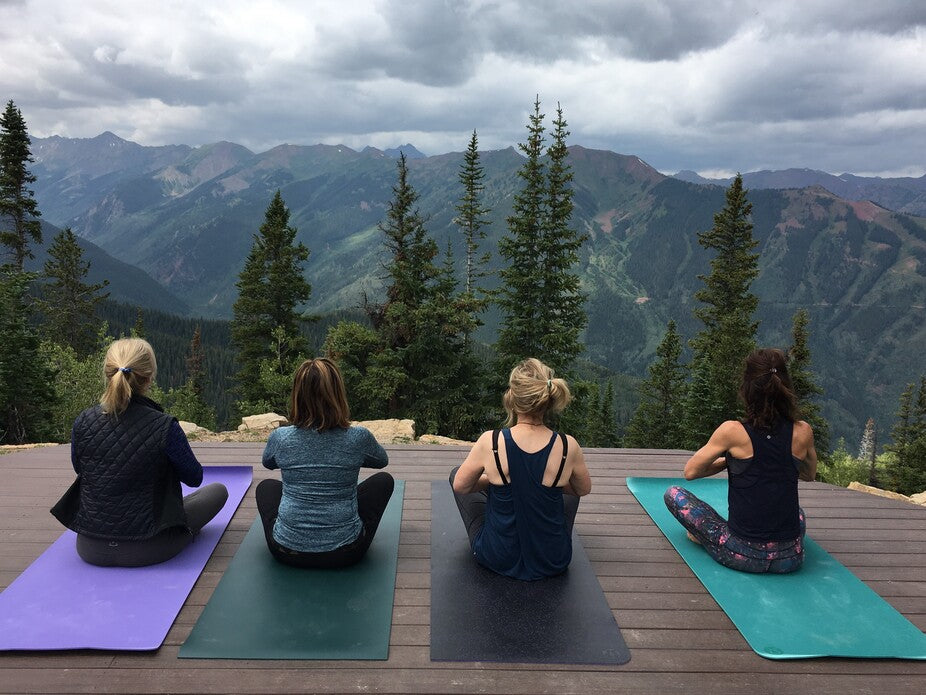Can you breathe wrong? Apparently, the answer is yes. How you breathe can affect how healthy you are, how beautiful you look and even how long you live. The good news is that it’s a simple fix and just knowing a few tricks on how to breathe better will make a difference you will see in as little as a matter of days.
When you breathe through your mouth what happens is you are exposing yourself to everything in your environment such as pollen, pollution and smog, and there’s no filter to protect against them reaching the lungs or the bloodstream from there. By contrast, if you breathe through your nose, you force the air through series of complex structures that are designed to filter the air and protect against those insults. You also get a huge perfusion of a gas called nitric oxide, which helps kill viruses and bacteria, and, it’s a vasodilator. Probably the most important job of nitric oxide is vasodilation, which is opening up of blood vessels to improve delivery of oxygen and nutrients to every organ, including, of course, the skin.
One interesting note: If you hum, you can increase your nitric oxide fifteen fold! This may be why many yoga practices have you hum.
When you breathe through your nose you breathe more slowly and get more oxygen than when you breathe through your mouth. If you breathe only through your mouth, you will find you will get an increase in blood pressure, increased fatigue and increased risk of infection.
How to fix your breathing pattern:
- Consider getting a sleep tape to help encourage yourself to nose breathe while you sleep. You don’t have to spend a lot on this, you can get a simple micropore tape with a light adhesive, just in the size of a postage stamp. When you remove it, use your tongue rather than ripping it off with your fingers to help avoid irritation.
- Take purposeful slow deep breaths, in through your nose, out through your nose or mouth
- Hum your way through your workout and throughout the day when you can.
- Breathe through your nose as often as you can, including while you’re working out or sitting at your desk.
- Consider breathing exercises to help control your breathing and improve lung function and capacity.
Your skin produces enzymes called nitric oxide synthases that stimulate the production of nitric oxide from the amino acid L-arginine, when the skin is under stress or “attack” such as from UV (aka sun) exposure or from chronic inflammatory conditions like psoriasis. The higher levels of nitric oxide stimulated by exposure to UV radiation or skin wounding also initiate a complex cascade of reactions that, among other things, stimulate the pigment forming cells, called melanocytes, to produce melanin which can lead to a tan, or skin darkening (hyperpigmentation), redness (erythema) and immunosuppression. is also thought to be important for the maintenance of skin barrier function and blood flow rate in the blood vessels of the skin.
Nitric oxide is an unstable molecule, it lasts only for a millisecond, and is not stored in the body, but made as needed. As we age we make less nitric oxide, but there is much you can do to slow the process and keep your levels up as much as possible. One is to exercise, especially yoga and to do breathing exercises that help you maximize nose breathing and also keep your lung function as high as possible. Topical ingredients that help reduce stress and oxidative damage to the skin include:
Anti-oxidants, such as that found in the Revitalizing Vitamin C cream help squelch free radicals and other damage to the skin.
- Peptides, found in the Utra Rich Peptide Renewal Cream help hydrate and visibly repair the signs of aging.
- Sunscreen: it’s so much easier to prevent the damage than to fix it after the fact. Using proper sun protection on a daily basis and reapplying regularly will go a long way in helping your skin reduce the need for nitric oxide and repair.
- Vitamin C, found in the Vitamin C Brightening Serum helps support nitric oxide production and squelch free radicals that can damage the skin
It also helps to eat foods that help produce nitric oxide such as:
- Beets: rich in nitrates which convert directly to nitric oxide
- Garlic: boosts nitric acid synthase within as little as an hour after eating.
- Dark chocolate: Just one ounce of 70-80% dark chocolate can significantly increase nitric oxide levels
- Citrus fruit: The high levels of vitamin C in fruits like oranges, grapefruit and lemons increase levels of nitric oxide synthase in the body
- Dark leafy greens: Kale, spinach and swiss chard are just a few of the leafy greens that are directly converted to nitric acid.
- Nuts and seeds: Especially walnuts and flax are high in an amino acid called arginine which is an important component in the production of nitric acid.
Bottom Line:
Nitric Oxide is essential for health and one of the best ways to support it is through nose-breathing. Adding in topical and oral nutrients help support nitric oxide production and help you age beautifully, inside and out.
Additional Sources:
Breathe: The New Science of a Lost Art by James Nestor
The Doctor’s Farmacy with Mark Hyman MD



![[The Science ] of Longevity: A Skin Focused Approach](http://dorisdaymd.com/cdn/shop/articles/Longevity3-9658695.jpg?v=1765451344)
![[Q&A Session] How Can I Regain Lost Collagen?](http://dorisdaymd.com/cdn/shop/articles/blog_collagen-129369-9354398_e967da1d-cb0e-4086-8c0d-714e0114968f-6680265.jpg?v=1763048229)
